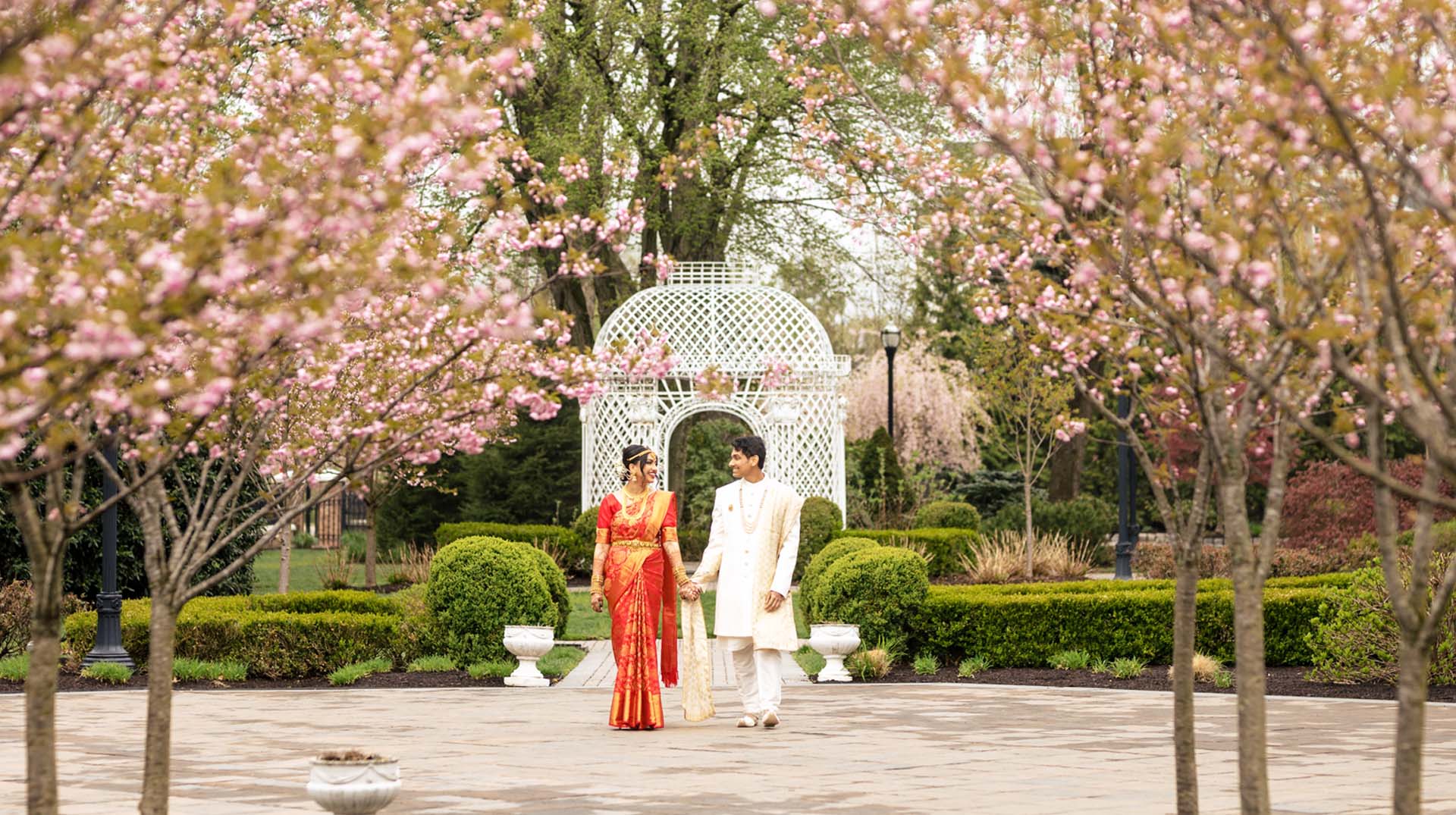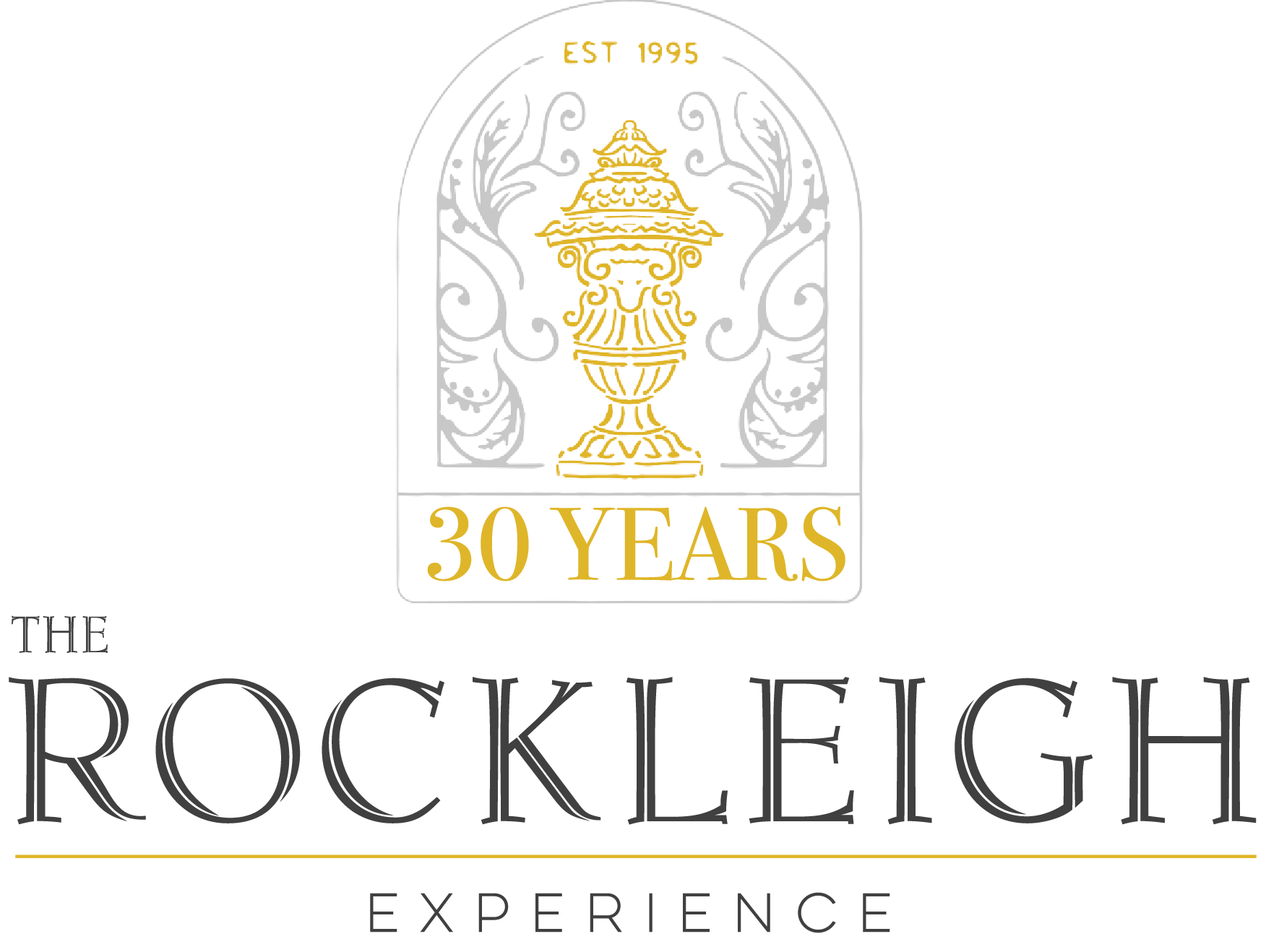
A Tapestry of Traditions: The Essential Elements of an Indian Wedding at The Rockleigh
As you step into the vibrant world of Indian weddings, you’re not just attending a ceremony, but immersing yourself in a tapestry of rich traditions and cultural splendors that have been spun over millennia. An Indian wedding isn’t merely a union of two individuals; it’s an elaborate festival that weaves together a kaleidoscope of customs, colors, and heartfelt emotions. In this blog post, we’ll unfurl the essential elements that make Indian weddings an affair to remember, complemented by the grandeur of The Rockleigh as the quintessential venue for such a majestic celebration.
Pre-Wedding Rituals
The commencement of the Indian wedding is marked by a series of profound pre-wedding rituals that are much more than mere formalities. These ceremonies are the initial threads woven into the fabric of the marriage, creating a foundation that is as culturally rich as it is personal.
Roka and Sagai Ceremony
The Roka ceremony is akin to an engagement in Western cultures but with a distinctively Indian touch. It marks the very first step towards the new alliance, where the bride and groom’s families meet to formalize the couple’s intent to marry. The atmosphere is one of jubilation and new beginnings as both families exchange tokens of good will and blessings. The Sagai or the engagement ceremony follows, where rings are exchanged between the couple, heralding the official start of their journey together. This is usually accompanied by a ‘Pooja’ or prayer service, asking for divine blessings for the couple’s future.
Sangeet and Music
The Sangeet ceremony is the celebratory prelude that brings both families together in a relaxed setting before the formality of the wedding day. It is a night resonant with the melody of traditional songs and the beat of the ‘Dhol’. It’s not uncommon for family members to put up dance performances, sometimes rehearsed for weeks, to honor the couple. This joyous occasion is less about perfect choreography and more about celebration and camaraderie. In modern times, the Sangeet has evolved to include elaborate themes and even competitive performances between both sides of the family.
Mehendi Night
Although part of the Mehndi ceremony is the bride’s intricate henna application, the occasion is communal, with women from both sides of the family adorning their hands with henna designs. It’s an informal gathering filled with warmth, where the older women often share marital wisdom and stories from their own weddings with the younger generation. It’s a rite that connects the bride with the ancestral line of married women in her family, marking her transition from maidenhood to marriage.
Haldi Ceremony
The Haldi ceremony involves the application of a paste made from turmeric, sandalwood, and rosewater to the bride and groom in their respective homes. This paste is believed to have purifying and beautifying properties and is applied by the family members in a festive atmosphere. The vibrant yellow of the turmeric stains everything with the hue of sunrise, symbolizing a new beginning. Laughter and playfulness characterize this ceremony, as family members often turn this into an opportunity for lighthearted fun.
Tilak and Ganesh Pooja
In many traditions, there is also a Tilak ceremony, which is usually a male-centric event, involving the application of a vermilion mark on the groom’s forehead by the bride’s father or another male relative, signifying the groom’s acceptance into the bride’s family. Following the Tilak, the Ganesh Pooja is often performed to invoke the blessings of Lord Ganesh, the Hindu deity known for removing obstacles, to ensure a smooth and auspicious start to the wedding festivities.
Each of these pre-wedding rituals is a thread in the rich tapestry of the wedding process, imbued with meaning and steeped in tradition. They serve to create a sense of continuity with the past, and community with the present, as two families come together to celebrate the forging of a new bond. It’s a delicate interplay of the sacred and the social, a celebration that prepares the couple and their families for the transformative journey of marriage.
Mehndi Ceremony
The Mehndi ceremony, often held a day or two before the wedding, is not just a function; it is a picturesque festival of joy. In this colorful ritual, the bride’s hands and feet are painted with henna, weaving intricate patterns that tell stories of love and matrimony. The designs range from simple floral motifs to elaborate representations of the couple’s love story and auspicious symbols for their married life. It’s a ceremony where women from both sides of the family come together, often accompanied by singing traditional songs that have been passed down through generations.
It is believed that Mehndi signifies the strength and power of love in a marriage and is hence considered a good omen for the forthcoming union. The ceremony turns into a festive gathering with the air perfumed by the scent of the henna, and the environment vibrates with the rhythm of the ‘Dholak’ – a traditional drum – as women dance and sing in merriment. The bride sits like a queen in waiting, while the artists create a masterpiece on her skin. Guests too, often partake in getting henna tattoos, which symbolize the joy and beauty of the occasion.
The Mehndi ceremony is also a time of bonding, where stories and advice are shared between the older and younger generations, weaving a thread of continuity and community within the fabric of the festivities. This pre-wedding event is not merely about beautifying the bride; it’s a ritual that prepares her for the new chapter in her life, amidst the company of her closest friends and family who surround her with blessings and laughter.
The Wedding Attire
The Wedding Attire for an Indian wedding is a canvas that portrays the cultural richness of the land. Every piece of clothing worn by the bride and groom is a testament to the artistry and traditions that date back centuries. For the bride, the wedding attire is usually a ‘Lehenga-Choli’ or a ‘Saree’, resplendent with embroideries and embellishments such as ‘Zari’, ‘Zardozi’, and ‘Gota Patti’. These are not mere garments, but heirlooms crafted with the threads of tradition, designed to tell a story of heritage and craftsmanship.
Red remains the classic choice for brides, symbolizing prosperity and fertility, but in recent times, brides have been seen embracing a spectrum of colors, from the royal purples to the serene ivories, each color chosen to complement their personality and the wedding theme. The ‘Dupatta’ or the veil adds an element of mystique and grace, completing the bridal ensemble.
For the groom, the attire is no less regal, with many opting for a ‘Sherwani’ – a long coat-like garment, which is intricately decorated, often with the same attention to detail as the bride’s outfit. Accessorized with a ‘Safa’ or turban, sometimes adorned with a ‘Kalgi’ or brooch, and ‘Mojari’ – traditional footwear, the groom’s attire is a statement of his stature on this monumental day.
These garments are often woven with gold and silver threads, signifying the luminous journey the couple are about to embark upon. Designers and artisans work for months, sometimes years, to create these masterpieces, ensuring that the couple looks nothing short of royalty on their wedding day. In the realm of such finery, each outfit is more than just wedding attire; it’s a cherished piece of personal history, a narrative of love, and a mantle of responsibility the bride and groom don to step into their future.
The ensemble is complemented by jewelry that rings with the echoes of antiquity – necklaces, bangles, earrings, and more, often passed down from one generation to another, each piece laden with blessings and well-wishes. The ‘Solah Shringar’, or sixteen adornments of an Indian bride, completes the bridal look, encompassing not only the jewelry but also the makeup and other accessories, each symbolic and integral to the bridal aesthetic.
The Wedding Day
The wedding day itself starts with the ‘Baraat’, the groom’s procession, often atop a horse or in luxurious cars, accompanied by music and dancing, culminating at the wedding venue. The Rockleigh, with its grand ballrooms and picturesque outdoor spaces, provides an idyllic setting for such a majestic arrival.
Following this is the ‘Milni’, where the two families formally meet and exchange garlands and gifts. It’s a gesture of acceptance and unity that sets the tone for the subsequent ceremonies.
The ‘Mandap’ is the sanctified area where the actual wedding rituals take place. Each pillar of the Mandap represents the four goals of life as per Hindu philosophy: Dharma (duty), Artha (prosperity), Kama (personal desires), and Moksha (salvation). The Rockleigh’s versatility as a venue can accommodate custom Mandap setups, ensuring each wedding is as unique as the couple’s preferences.
During the ‘Phere’, the couple circles the sacred fire, taking vows of loyalty, love, and mutual respect. Each round signifies a promise and a prayer for their life ahead. The ‘Sindoor’ and ‘Mangalsutra’ rituals that follow symbolize the marital status of the bride and are among the most poignant moments of an Indian wedding.
Post-Wedding Rituals
As the wedding day draws to a close, the ‘Vidaai’ marks the bride’s bittersweet farewell to her family. It’s an emotional ceremony, filled with tears and blessings. The couple then proceeds to the groom’s house, where post-wedding games and the ‘Reception’ await, allowing guests from both sides to mingle and celebrate the newlyweds.
In conclusion, an Indian wedding is a mosaic of timeless traditions and festive celebrations. Venues like The Rockleigh serve as the perfect canvas to paint these vibrant ceremonies, ensuring that the wedding is not only a reflection of the couple’s cultural ethos but also a memorable event etched in the hearts of all those who partake in it.
Every Indian wedding is a unique affair, a testament to the couple’s heritage, and a start of their new journey together. As they step into this new phase of life, surrounded by friends and family, each ritual, each tradition weaves into the fabric of their shared life, creating a story that’s as rich in love as it is in culture.
In the intricate dance of traditions that define an Indian wedding, every detail is a thread in the larger tapestry of marital bliss, weaving an event that transcends mere celebration to become an emblem of cultural identity. As the final rituals are performed and the vibrant colors of the day give way to the starlit serenity of night, the essence of these customs lingers in the air, as much a testament to familial legacy as it is to the couple’s love story.
Nestled within this realm of time-honored traditions is The Rockleigh, a venue whose very foundations seem to resonate with the rhythms of Indian weddings. With its blend of classic elegance and modern luxury, The Rockleigh emerges as a premier choice for couples looking to honor their past while embracing their future. Its versatility makes it a canvas ready to be painted with the rich reds and golds of Indian weddings, and its spacious ballrooms are a fitting counterpart to the grandeur such celebrations demand.
The expertise of The Rockleigh in hosting Indian weddings cannot be overstated. They have not only perfected the art of orchestrating these multifaceted events but have also embraced the cultural significance behind each ceremony. Their experience shines through in how seamlessly they accommodate the complex intricacies of Indian traditions, from the ‘Sangeet’ to the ‘Mandap’, ensuring that each ritual is given its due respect and attention.
The Rockleigh’s commitment to excellence is evident in every wedding they host. With a deep understanding of the cultural nuances, they provide personalized service, ensuring that each wedding is not just an event but a cherished memory for the couple and their families. From the moment the ‘Baraat’ approaches its gates to the emotional ‘Vidaai’, The Rockleigh stands as a sentinel to tradition, joy, and the union of hearts.
Choosing The Rockleigh means embracing a venue that appreciates the depth of Indian weddings, one that ensures the harmonious blend of ancient customs and contemporary luxury. It is here that couples find a sanctuary to embark on life’s journey together, enveloped by the love of their families and the blessings of their ancestors. The Rockleigh isn’t just a backdrop for an Indian wedding; it is an integral part of the story that unfolds, a place where dreams are realized and the tapestry of life is enriched with every knot of tradition.
In the end, the true essence of an Indian wedding at The Rockleigh is not merely in the sum of its parts, but in the magic that is created when those parts come together—a celebration that is as eternal as the traditions it upholds, and as personal as the love it honors. It’s a venue where every corner resonates with joy, every moment is a tribute to heritage, and every celebration is a reflection of the rich tapestry of Indian culture. The Rockleigh isn’t just a location; it’s the beginning of a beautiful legacy.




